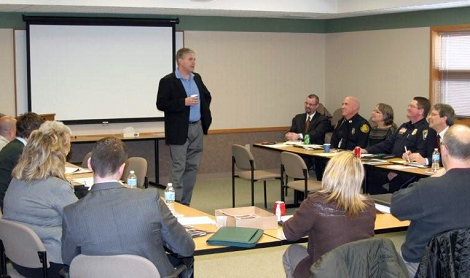Editorial: City council, drug officers need to have a blunt talk
By Brandi Makuski
No pun intended, but it’s high time for another drug summit in Stevens Point.
In 2014, the city hosted the first of several “heroin summits” in central Wisconsin. The meeting brought together elected officials from throughout Portage and Wood counties, along with physicians, pharmacists, legal professionals, and state and local law enforcement.
The meeting was a closed-door setting without media or members of the public present. Organizer Kevin Ruder, retired Stevens Point Police Chief, said the privacy was essential to allow for frankness during the conversation.
In summer 2017, Gov. Scott Walker signed pieces of the HOPE (Heroin Opiate Prevention and Education) agenda at a number of locations across the state, to include a full-court press event in Stevens Point. Along with outlining new guidelines for prescribing painkillers, the agenda also called for expansion of addiction treatment and stronger education on the dangers of prescription abuse leading to illegal drugs.
Since then, aside from the occasional news story about a particularly large drug bust (due not to a decreasing number of drug arrests, but rather a lack of trained reporters in the area—but that’s another story), there’s been little attention brought to the drug problem locally.
And it shows.
While heroin and methamphetamine have been almost competing for first place in recent years, heroin use is down, according to local drug officers, but the availability of methamphetamine in Wisconsin has increased by 250 percent since 2011. According to the Wisconsin State Crime, 42 meth cases were confirmed in Portage Co. in 2017, though it’s not clear if the crime lab’s well-publicized testing backlog had any effect on that number.
The Central Wisconsin Drug Task Force, a 14-agency network covering Portage and eight surrounding counties, has also reported an increase in meth. In 2014, the task force reported 1,111 new drug investigations, 449 felony arrests and just over 15 grams of meth seized.
In 2017, the task force investigated 1,305 new cases, made 805 felony arrests, and seized over 1,060 grams of meth.
It can take a few days or several months to execute an arrest, and most uncover information on several other people involved in drug crimes, and the cycle continues, requiring additional investigation, witnesses, and evidence, all which require collaboration, hence the task force.
The local contribution to the task force is three dedicated narcotics officers—one each from Portage Co. Sheriff’s Office, and Stevens Point and Plover police departments—with additional support, as available, from other investigators who are spread out among various crime bureaus.
Local narcotics officers will tell you the Stevens Point/Wausau areas are part of the “pipeline” for drug dealers and mules. We’re located just off the interstate and about halfway between Milwaukee/Chicago and the Twin Cities: both hubs for big fish in the drug scene.
Stevens Point police approached the city in 2016 with a 58-page manpower study outlining the department’s needs for additional personnel, showing it had five fewer positions than it should, compared with cities of similar size. Another study came in 2017, this time with a formal request for a second drug officer position, as the study showed increasing crime statistics in the city.
That request was approved, but only contingent on winning a federal grant that would provide at least some of the $84K funding needed for the position. The department did not win the grant.
In 2018, Stevens Point Police Chief Martin Skibba made his second request for the new drug officer position. The city council unanimously approved adding the position provided it had the funding, but later voted to spend available funding on increasing existing employee wages, leaving the request unfilled for a second year.
Council members voiced their disappointment over not being able to fund the position, yet continued approving financial decisions that ensured, even if indirectly, the new position couldn’t be filled. Even when it came to light that the city had over $1.1 million in leftover monies following the construction of Whitetail Subdivision, the city council opted to use those funds for neighborhood improvement grants, which are now available to the public.
According to City Treasurer Corey Ladick, the council could have used those funds to pay for an additional officer or two. It wasn’t the best idea to pay for an ongoing expense with one-time funds, he said, but it was legal and within the purview of the city council. And it very well could have funded, at least, the requested additional drug officer for three or more years, buying time until another funding source from inside the city presented itself; until SPPD penned a successful grant application; or until state legislation could be enacted that allows some other mechanism for additional police funding.
It’s time for a blunt talk with members of the city council. With their near laser-focus almost exclusively set towards community development and bicycle/pedestrian accommodations in this city, they clearly possess a lack of awareness of just how serious the drug problem is.
The prevalence of meth and other narcotics in our immediate community is a growing problem, as are the health effects incurred by those who suffer from abuse or addiction, and lack of infrastructure to address them; and the stressors it places on local medical and mental health facilities.
Local electeds must be made to answer for how woefully underfunded, understaffed, and under-supported local law enforcement truly is in this community. It’s the kind of education that can only be given by street cops and undercover drug officers in a private setting, and it’s past due.


